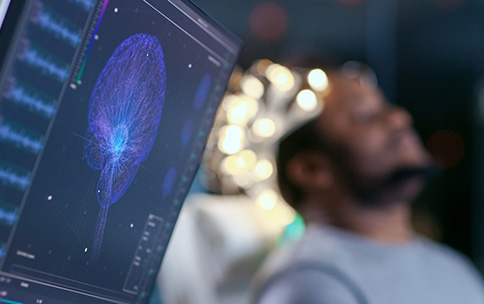
While there are many factors that help animals sleep, a driving component is known as the circadian rhythm. This rhythm is a set of physical, mental, and behavioral changes that follow the daily light and dark cycle. During nighttime, a chemical called melatonin is released to help synchronize our circadian rhythm and prepare us for sleep by interacting with two proteins called MT1 and MT2. Changes to our circadian rhythm leads to insomnia or other sleep defects. Gaining insight into how the MT1 and MT2 proteins work, could allow researchers to develop new therapeutics to help treat circadian rhythm disorders.
The goal of the Illuminating the Druggable Genome (IDG) program is to identify and provide information on proteins that are currently not well studied within commonly drug-targeted protein families, including G-protein coupled receptors (GCPRs), to which MT1 and MT2 belong. Research supported by the IDG program, and published in the journal Nature (link is external), used advanced computational methods to model how over 150 million different chemicals may interact with the MT1 protein. The study identified two brand new molecules that changed how the MT1 protein functioned and shifted a mouse’s sleep cycle by up to 1.5 hours. These two molecules bound to regions of the protein unidentified before and opened a new pathway for changing MT1 activity. This study illustrates opportunities for controlling melatonin biology via specific MT1 binders. It also shows the value of screening large libraries of known chemicals for the discovery of new, active binding sites on proteins of interest. By finding new chemicals that interact with these proteins, we will be able to better understand the biology behind sleep and may be able to develop new therapies for those who suffer from sleep disorders.
Reference:
Virtual discovery of melatonin receptor ligands to modulate circadian rhythms. Reed Stein, Hye Jin Kang, John McCorvy, Grant C. Glatfelter, Anthony J. Jones, Tao Che, Samuel Slocum, Xi-Ping Huang, Olena Savych, Yurii S. Moroz, Benjamin Stauch, Linda C. Johansson, Vadim Cherezov, Terry Kenakin, John J. Irwin, Brian K. Shoichet, Bryan L. Roth & Margarita L. Dubocovich. Nature, February 2020, https://doi.org/10.1038/s41586-020-2027-0 (link is external)


